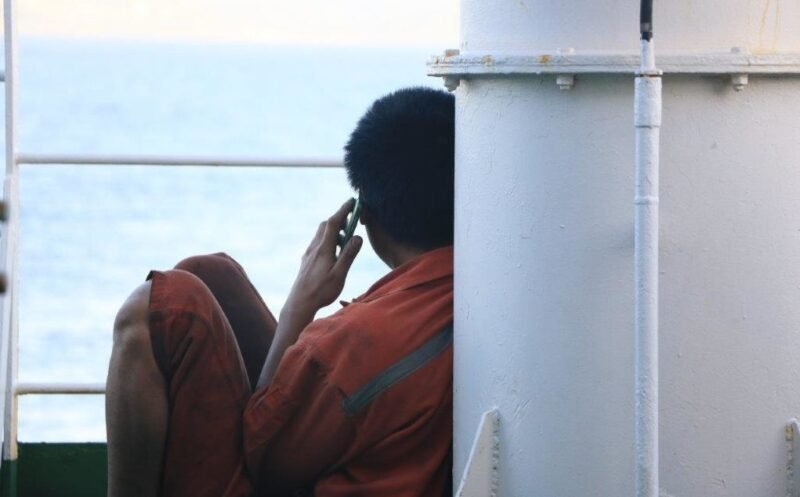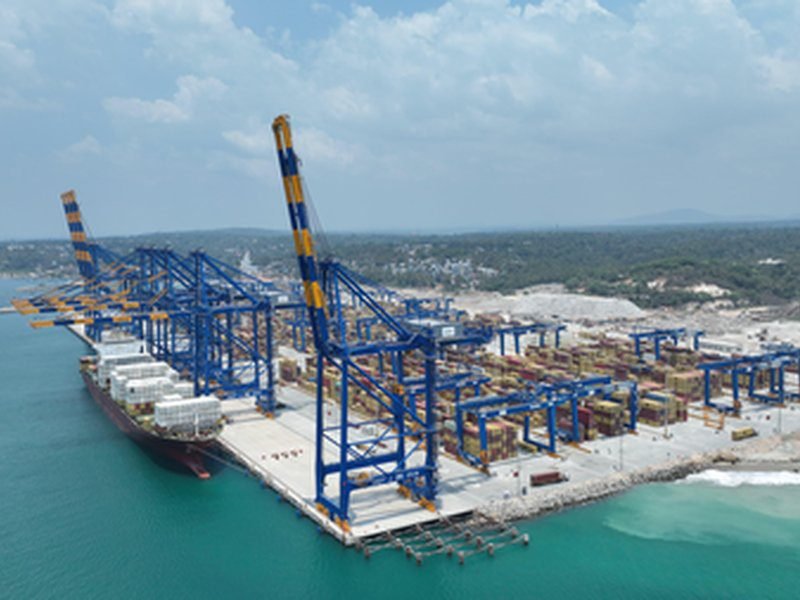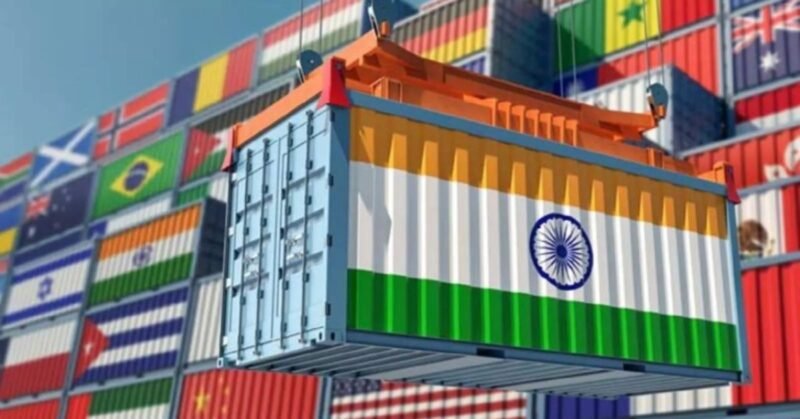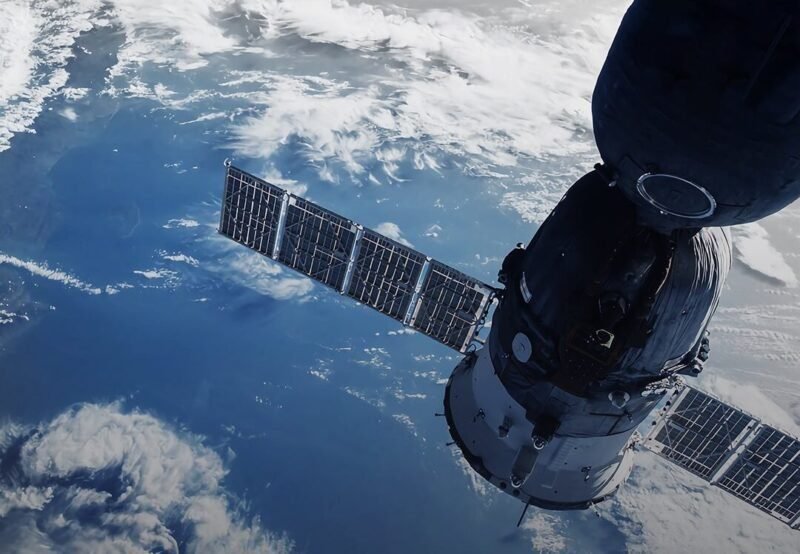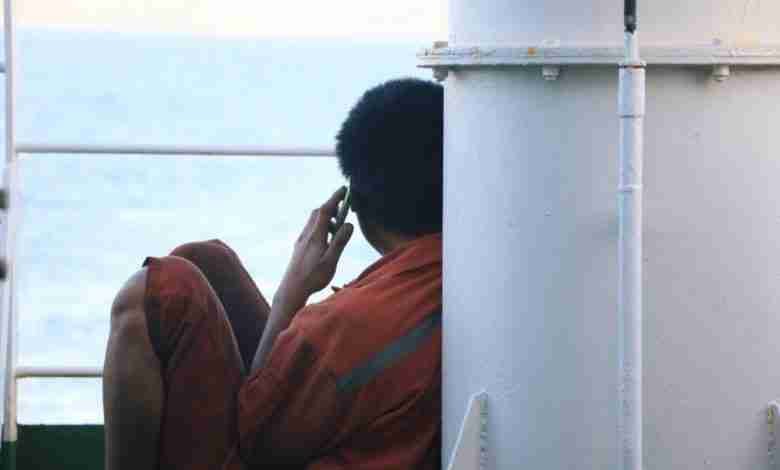Following Stories compiled in this News Digest for the week from 28 Mar 2022 to 03 Apr 2022 in descending order:
- Shipping routes and payment modes are being redrawn
- Major Indian Ports registered highest ever traffic during last fiscal
- Singapore allows shore leave for vaccinated seafarers
- BV expands remote inspection capabilities
- Indian Ocean Commission Plans a Regional Maritime Single Window
- Seafarers’ global demand ’stable’
- First concept of ammonia/liquefied CO2 carrier unveiled
- Seafarers at the heart of CMA opening panel
- US regulatory framework a barrier to lower carbon fuels
- P&O Ferries Rejects British Government Plea to Rehire Fired Workers
- Crew Repatriation, Ship Owner’s Responsibility Under Russian-Ukranian War
- Africa as the next manning frontier
- Rising Sense of Dissatisfaction May Lead to Seafarer Attrition
- Shipping’s digital disconnect may only be resolved by a disaster
- How blue economy can help rewrite India’s growth story post pandemic
- An 83-Year-Old Sailor Just Left San Francisco on a Tiny Sailboat Headed to Osaka
Shipping routes and payment modes are being redrawn
03 Apr 2022
A lot of container vessels are waiting or rerouting, as ports in the Black Sea are closed, and shipping companies are suspending shipments to and from both Russia and Ukraine.

Europe is heavily dependent on Russia for its energy demands; it is Russia’s largest energy consumer. About half of Russia’s crude oil exports go to Europe, while about seventy percent of Russia’s natural gas goes to Europe. As a result of all the sanctions imposed on Russia, Europe will face shortages, supply chain disruptions, higher prices, slower growth, and job losses, leading to an economic slowdown; if this continues, Europe will enter recession, with a spill over effect in the United States, China, and pretty much everywhere else.
China is Russia’s largest coal buyer, accounting for 15% of China’s coal imports. Although China’s coal inventories are high, and an upcoming seasonal dip – in its use for heating – means it can afford to reduce imports for the time being, any prolonged supply disruption from Russia is a major concern, especially since Beijing continues to ban coal imports from Australia, and major supplier Indonesia, which accounts for 70% of China’s coal imports, imposed new export limits this year. Currently, almost all contracts are US Dollar denominated i.e. there is no way to make payment, however in a prolonged situation there will be discussions with Russian exporters about paying with Renminbi.
On a similar move, several press reports say that Saudi Arabia is in active talks with Beijing over the last week, to price some of its oil in Renminbi. This discussion has been going on for the last five years, but has recently become more relevant. Such a move would put a major hole in the US Dollar dominance of the oil market and a shift of the global financial status quo.
At the moment, coal imports from Far East Russia need to be replaced, this means rising freight costs with shipping charges already substantially higher from Indonesia and South Africa. Wheat imports from African and Middle Eastern countries will also need to be replaced. Countries like Canada, Australia, Germany, and France will come to replace some of it. As we speak a lot of container vessels are waiting or rerouting, as ports in the Black Sea are closed, and the world’s biggest shipping companies like Maersk, MSC, ONE, Hapag Lloyd among others are suspending shipments to and from both Russia and Ukraine giving the global supply chain, still bottle-necked from the pandemic, another hurdle, more like a blow, and sending shipping rates sky. High. Reference
Major Indian Ports registered highest ever traffic during last fiscal
02 Apr 2022
The major Indian ports under Ministry of Ports, Shipping & Waterways, have registered an impressive growth rate in traffic movement at 6.94% during FY2021-22 over the previous fiscal year (Y-o-Y) is indicating sharp recovery operations post the pandemic lockdowns. The five major ports of the country recorded their highest ever traffic during the year.

In addition, the Inland Waterways Authority of India (IWAI), the statutory body in charge of the waterways in India under the Ministry, transported a total of 105 million tonnes of cargo through National Waterways, registering an impressive increase of 25.61% Y-o-Y basis.
The average turnaround time for container vessels at major ports has improved from 43.44 hours in 2014 to 26.58 hours in 2021.
The developments are in line with the objectives of Maritime India Vision given by the Ministry of Ports, Shipping & Waterways (PSW). This has resulted the Ministry to clock growth & improvement across its verticals. The effort put in to modernise, mechanise as well as digitise processes led to positive transformation leading to better cost & time in international trade contributing towards Ease of Doing Business, a government statement said.
During 2021-22, major ports witnessed a rise of 6.94% in traffic over last year. Five Major Ports recorded their highest ever traffic during FY 2021-22.
Moreover, then Inland Waterways Authority of India (IWAI) through the IBP Route based on the protocol on Inland water transit and Trade (PIWTT) between India & Bangladesh has unlocked the value from the cargo trade in the region.
In line with the “Act East” policy of Prime Minister, the Ministry of Ports, Shipping & Waterways, has taken up several infrastructure projects on National Waterways-1, Indo-Bangladesh Protocol route, and NW2, through the Inland Waterways Authority of India (IWAI). These steps have improved the connectivity with North Eastern Region (NER) through waterways. Reference
Singapore allows shore leave for vaccinated seafarers
02 Apr 2022
In line a relaxation in border measures vaccinated ship’s crew can take shore leave in Singapore.

With Singapore dropping quarantine requirements for all vaccinated travellers, shore leave will now also be granted for seafarers in vessels calling at one of the world’s busiest ports.
The Maritime & Port Authority of Singapore MPA circular said that fully vaccinated ship’s crew visiting the port would be granted shore leave from 1 April 2022. Proof of full vaccination and negative Antigen Rapid Test (ART) within the previous 48 hours will be required.
With the good news for seafarers, who have unable to take shore leave in Singapore during the least two years of the pandemic, drop-in centres will also be re-opening. The Mission to Seafarers Singapore (MtSS) run centre at Jurong Port will be re-opening on 15 April.
“We’re delighted that things are opening up for seafarers,” said Toh Soon Kok, Port Chaplain for MtSS.
“It is the accessibility for shore leave that would affect the re-opening of our drop-in centres. MPA has approved seafarers to come to our drop-in centres with the conditions they possessed an ATL pass (allow to land pass). They will need to produce a negative supervised ART result 48 hours before disembarkation.” Reference
BV expands remote inspection capabilities
02 Apr 2022
Bureau Veritas (BV) can now provide owners and operators with new ways to survey their ships through remote inspection techniques (RIT) operated by BV’s own surveyors in France.

BV’s key objective with the use of RIT is to limit the use of costly and dangerous means of access, by replacing them with safer and more efficient technologies during the structural inspection of the hull. RIT also provides value to ship owners and operators, supporting the optimisation of the survey time, facilitating the preparation and planning of dry-docking repairs, and saving costs.
This announcement follows two years of work to assess the potential, usage and value of Remote Inspection Techniques, which BV validated through a series of tests, Proof of Concepts (POC) and pilot surveys with aerial and underwater drones, crawlers, and remotely operated vehicles (ROV) on different types of vessels. In applicable cases, especially the close-up inspection of large cargo and ballast spaces at renewal or intermediate surveys, BV conducted surveys with drones operated by RIT service suppliers certified by BV and contracted by ship owners. BV has already approved 41 RIT Operators.
Remote Inspection Techniques are set to have a positive, long-term impact across the maritime industry, enhancing survey quality, while reducing both risks and costs. Reference
Indian Ocean Commission Plans a Regional Maritime Single Window
01 Apr 2022
A Novel Regional Maritime Single Window for Western Indian Ocean Countries.

The last two years of the COVID-19 pandemic have proven revolutionary for global supply chains. As more countries went into lockdown, demand for commodities – especially in the West – spiked dramatically. Transatlantic and transpacific routes experienced a new shipping boom.
This meant that the container fleet capacity available for developing markets in Africa and Asia was reduced. Only 11 percent of the total cellular fleet is available for the Intra-Asian market, down from 12.8 percent recorded at beginning of last year. The capacity available for Africa decreased from 7.5 percent to 6.7 percent, according to recent data by Alphaliner.
This evolution of the ocean freight sector suggests a risk of marginalization of small economies and island markets. Propelled by this notion, the Indian Ocean Commission (IOC) – an intergovernmental body that links island nations of the Southwest Indian Ocean – has come up with a project to shield these countries from shocks in global supply chains.
The Indian Ocean Commission, through its program on Enhanced Maritime Connectivity, wants to establish a regional single window system to spur trade facilitation amongst its member states. These include the island nations of the Union of Comoros, Reunion (France), Madagascar, Mauritius and Seychelles. It will also extend to South Africa, Kenya, Mozambique and Tanzania as partner countries.
If successful, this could be the first regional maritime single window system in the world. The EU has legislation for a European maritime single window but a portal does not exist yet. The ASEAN Single Window, which integrates National Single Windows of ASEAN member states, is a general trade facilitation tool but is yet to incorporate a maritime module. Reference
Seafarers’ global demand ’stable’
01 Apr 2022
THE Norwegian Shipowners’ Association (NSA) has assured of a stable demand for seafarers globally despite economic uncertainties.

Attorney Paal Tangen, Ateep Steering Committee chairman, said while the Covid-19 pandemic has slowed down the deployment of seafarers, the global shipping industry continues to hire workforce onboard to keep the flow of global supply and demand going.
“Ninety-percent of goods in the international trade goes through by ships. That’s why we need good seafarers,” said Tangen, during his visit in the University of Cebu-Lapu-Lapu and Mandaue on Thursday, March 31, 2022.
“We wanted to look into the future as possible because the maritime industry has been volatile,” he said, citing the current Covid-19 pandemic which has been threatening the industry, harbor lockdown and supply chain problem, and the continued aggression between Russia and Ukraine as among the challenges faced by the maritime industry today.
Meanwhile, in the short term, Tangen said the conflict between Russia and Ukraine may open job opportunities to more Filipino seafarers due to a shortfall in the global shipping workforce.
Tangen said the Russia-Ukraine conflict could make it difficult to move seafarers in and out and the economic sanctions could make it difficult to pay seafarers from both countries.
According to the Seafarer Workforce Report published in 2021 by Baltic and International Maritime Council and International Chamber of Shipping some 1.89 million seafarers are currently operating over 74,000 vessels in the global merchant fleet.
Of this total workforce, 198,123 (10.5 percent) of seafarers are Russian of which 71,652 are officers and 126,471 are ratings. Ukraine accounts for 76,442 (four percent) of seafarers of which 47,058 are officers and 29,383 are ratings. Combined they represent 14.5 percent of the global workforce. Reference
First concept of ammonia/liquefied CO2 carrier unveiled
01 Apr 2022
Japanese shipping company Mitsui O.S.K. Lines (MOL) has completed a concept study of an ammonia/liquefied CO2 carrier to flexibly meet future transport demand.

MOL cooperated with the Mitsubishi Heavy Industry (MHI) Group’s Mitsubishi Shipbuilding on this research.
As explained, the liquefied CO2 carrier (LCO2 carrier) can play a key role in efficiently transporting captured liquefied CO2 to storage reservoirs or usage sites in the value chains of carbon dioxide capture utilization and storage (CCUS), which is drawing attention as a means of realizing a low- and decarbonized society.
In addition, there is growing interest in ammonia as a next-generation clean energy source that does not emit CO2 during combustion. The movement to strategically use ammonia is increasing under the global trend toward decarbonization.
Like the LCO2 carrier, for which a concept study was completed in November 2021, the cargo tank capacity of the ammonia/liquefied CO2 combined carrier is set at around 50,000 cbm on the assumption of the future liquefied CO2/ammonia market.
In the future, based on this ship type, MOL continually studies other various ship types with Japanese maritime clusters to flexibly meet customer needs based on the overall value chain.
MOL entered the liquefied CO2 ocean transport business through investment in Larvik Shipping AS which manages LCO2 carriers for industrial customers in Europe. Reference
Seafarers at the heart of CMA opening panel
31 Mar 2022
The first industry panel of Connecticut Maritime Association (CMA) Shipping 2022 covered a wide range of industry topics, with the need to recruit, train, retain and support seafarers central to them all.

Moderator Roy Bleiberg, Vice President, Business Development, ABS, noted the advance of technology across the sector from autonomy, remote control and the use of 3D plans in construction, as well as the drivers behind these changes like corporate ESG.
“Even with all the digitalisation of technology that we’re seeing, it really does come down to the seafarer. They’re the ones that are really facing a lot of these challenges that we’re going to have in the future.
Jason Zuidema, Executive Director, North American Maritime Ministry Association (NAMMA), said that connectivity had become a priority for seafarers through the pandemic, and had been raised even higher for some seafarers due to Russia’s invasion of Ukraine.
Russian and Ukrainian seafarers worldwide, along with their crewmates, are under immense pressure as they think about their own families, especially Ukrainians thinking about family members who may be fleering war, said Zuidema.
Robert Ashdown, Secretary General, International Association of Classification Societies (IACS) said that the three elements of ESG need to be given parity, and on the social sustainability side, seafarer working and living conditions are key and not up to scratch on too many ships. Reference
US regulatory framework a barrier to lower carbon fuels
31 Mar 2022
Complexity and overlapping jurisdictions in US maritime regulation pose a challenge to decarbonization, according to an expert.

Speaking at CMA Shipping 2022 on the panel “Renewable Energy – The Dream vs the Reality”, BlankRome partner, Douglas Shoemaker, said:
“I’m seeing investors who want to invest in a [fuel] concept, I see shipowners who want to enter into construction agreements, and then I see a charter party that’s going to potentially fund that new construction, and then an end customer and then an end beneficiary of the movement of whatever is going to be on board that vessel. How do you explain and set out all of the different risks that are there when you don’t know what the regulatory framework is?”
Shoemaker said that trials of alternative fuels are generally suited to shortsea routes, and in the US that generally means running afoul of a further significant regulatory hurdle: the Jones Act.
The call for uniformity in US maritime law is a buzzword, said Shoemaker, and that poses a challenge within the US and its various jurisdictions. What the industry really needs is international uniformity of rules, he added.
Mark Darley, Director, Marine and Offshore, Lloyd’s Register Marine & Offshore, reflected on the changes he had seen since last attending CMA Shipping in 2018, particularly the industry dealing with Emission Control Areas (ECAs).
Part of the industry’s difficulty in adjusting is down to a change in approach to regulation, said Darley. Historically, the maritime industry is used to being told what to do, but the issues under discussion now are goal- and risk-based.
“There’s a lot of momentum developing, not just within shipping, but across the whole world to awaken across the whole supply chain because that’s what’s needed. If you look at the $2 trillion that is needed to decarbonize maritime, 85% of that investment is not needed on the ship and technology. It’s needed on the infrastructure. It’s needed on the crew, it’s needed on the training, it’s needed in other tertiary industries,” said Darley. Reference
P&O Ferries Rejects British Government Plea to Rehire Fired Workers
30 Mar 2022
P&O Ferries on Tuesday rejected the British government’s request to rehire 800 workers it fired without notice two weeks ago, saying that doing so would cause the company to collapse.

P&O Ferries, an 180-year old company now owned by Dubai-based logistics group DP World, prompted an outcry from British government ministers, lawmakers and trade unions for its shock move this month to replace staff with cheaper agency workers.
Britain’s coastguard agency has since detained two P&O operated ferries citing safety concerns over a lack of crew familiarization.
P&O Ferries’ boss Peter Hebblethwaite said the government’s request to reverse the redundancies ignored “the situation’s fundamental and factual realities,” responding to Transport Secretary Grant Shapps in a letter posted on Twitter.
P&O Ferries has a fleet of more than 20 ships and operates over 30,000 sailings a year on routes between Britain, France, Ireland and elsewhere in northern Europe. It has partly blamed its restructuring on the pandemic, saying it had lost 100 million pounds last year due to virus-related restrictions.
Shapps had on Monday said a package of measures would be introduced to block ferry groups seeking to pay workers less than the minimum wage.
Hebblethwaite told a parliamentary committee last week that the company broke the law by not consulting unions so it could instead bring in cheaper agency staff.
The new hires were earning an average of 5.50 pounds an hour, he told the committee. The UK minimum wage, which is 8.91 pounds at present for most workers, is set to rise to 9.50 pounds next month. Reference
Crew Repatriation, Ship Owner’s Responsibility Under Russian-Ukranian War
30 Mar 2022
Repatriation is one of the obligations of the ship owners which arises with the termination of the employment agreement of crewmembers. With the termination of the employment contract between the crewmember and ship owner, the crewmember is entitled to claim repatriation. In principle, repatriation includes transfer of the crewmember to the port of registry or to the location which is determined by the parties in the contract, upon the termination of the employment contract without notice by the crewmember or ship owner or upon termination on its own motion. Moreover, all mandatory costs during this journey must be covered by the ship owner.
Due to the current Ukraine-Russia war, difficulties may arise regarding the responsibility of the ship owner in cases such as taking measures that hinder the mobility of the ships and the failure to carry out the repatriation processes of the crewmember. Basic rules regarding repatriation, the responsibilities of the ship owner and the crewmember are regulated under Maritime Labor Code No. 854, the Repatriation of Seafarers Convention No.166 prepared by the International Labor Organization (ILO) and Maritime Labor Convention (MLC 2006) which involves the Convention No. 166 as well.
Maritime Labor Code numbered 854 shall be implemented to the crewmembers which work with an employment contract on board the Turkish flagged vessels weighing 100 gross tons or over and their employers. “Repatriation of Seafarers Convention No.166”, however, shall be implemented to all the employees which work on board the seagoing vessels registered in the territory of any Member State the Convention is in force. These regulations shall be implemented regardless of the nationality of the crewmember. In the case of these two legal norms are regulating the same issue which contradict to each other, the Convention No. 166 must be applied since it is an international agreement and it contains provisions that in favor of the crewmember.
Requirements for a crewmember to entitle to claim repatriation, responsibilities of the ship owner and the crewmember is regulated between the Articles 21 and 25 of the Maritime Labor Code No.854 and the above mentioned Convention No. 166. Although the rules regarding repatriation have been determined in both national and international legislation, it is also important to solve the difficulties that arise during the repatriation of the crewmember and the responsibility of the ship owner.
Obligation of repatriation brings with it the question of which location the crewmember to be repatriated and up to what stage the obligations of the ship owners will continue during this process of repatriation. Due to the Ukraine-Russia war, it’s crucial to examine these subjects so as to protect both parties’ rights. For more information and Reference, click here.
Africa as the next manning frontier
30 Mar 2022
Will managers turn to a new continent to staff the next generation of ships?

Maritime has long been an attractive industry for young talent in countries with a less-developed economy, where seafaring has given career opportunities. However in the longer term there is growing concern of a demographic timebomb from today’s crewing powerhouses with fewer young people looking for a career at sea.
As old powerhouse seafaring nations such as the Philippines and India have proven vulnerable of late, driven by the coronavirus pandemic and other industries starting to look more appealing, some owners are turning their attention to new areas to source crew, with Africa looking like a promising emerging market.
Caroline Hout, senior vice president of shipmanagement at Delta Corp Group, reckons some African countries such as Ghana are already a good source of seafarers with some quality maritime academies and schools, but she also stresses the need for further support from owners and managers to introduce access to new technologies and to get to young people aspiring to improve their income. “Africa will definitely take its place more and more on the crewing map,” she predicts.
In addition to Ghana, David Borcoski, CEO of ASP Ship Management, highlights South Africa, Ethiopia and other lesser-known sources of crew that, for various reasons, remain untapped. “In most of these new locations, there are not huge numbers of trained seafarers – so it will take time to develop,” he cautions.
Some shipmanagers are not so keen on Africa, as they remain confident in the major crew sources such as India, the Philippines, China and East Europe.
As seafarer supply tightens and wages rise, managers are looking to find low cost labour alternatives. Columbia Shipmanagement president and CEO, Mark O’Neil, points out that economic necessity has consistently been the biggest single recruitment factor for seafarers and seafaring nations.
As the shipping industry is already struggling with crewing shortfalls, there could be a serious shortage of merchant sailors to crew commercial ships in four years if action is not taken to boost numbers, raising risks for global supply chains, a report by BIMCO and the International Chamber of Shipping (ICS) warned last year.
For Rajesh Unni, CEO of Singapore shipmanager Synergy Marine Group, the future of shipmanagement is not about finding the cheapest workers, it’s about finding the best trained people with the skills to operate modern, smart, digital ships. Reference
Rising Sense of Dissatisfaction May Lead to Seafarer Attrition
29 Mar 2022
In a webinar, the founder of the Seafarer Happiness Index warned that the industry may see higher attrition ahead because of rising discontent among mid-career seagoing professionals. The latest iteration of the index – for Q4 2021 – reveals a growing dissatisfaction with hours, workload, inflation-adjusted wages, and the level of respect accorded to seafarers.

“There’s a little bit of a ticking time bomb that we’re finding within the happiness index responses. A lot of seafarers, and particularly seafarers of maybe more senior ranks . . . are definitely talking in negative terms about why they’re at sea,” said Steven Jones, the index’s longtime editor. “They feel that there’s a sense that the whole profession, the vocation of seafaring itself is a bit broken. They have broken sleep, they have broken systems to deal with. They feel broken themselves, and we have to try to respond to that and fix it.”
A good share of the frustration is driven by pandemic-related policies. For many seafarers, shore leave is a thing of the past, and “they’ve almost given up on the concept of it.” This takes much of the romance and appeal out of the seafaring life, and leaves crewmembers bottled up on board for months.
More recently, there are growing signs of tensions between Russian and Ukrainian seafarers because of the ongoing invasion. The sense of camaraderie that was seen in the early days of the war is eroding on many ships.
The rare bright spots amidst an otherwise gloomy onboard atmosphere have to do with connectivity: more of it for casual use and interaction with family. Reference
Shipping’s digital disconnect may only be resolved by a disaster
29 Mar 2022
Significant disconnects still exist between the industry’s expectations of cyber security and the realities on the ground. The assumption that regulation was going to improve industry readiness has proved woefully wide of the mark and the lack of basic training is still leaving the industry vulnerable

WHEN the Ever Given (IMO: 9811000) became grounded in the Suez Canal 12 months ago, blocking a major global trade artery in the process, there were initial rumours circulating that a cyber attack was to blame.
A year on and ransomware attacks, costing shipowners an average of $3.1m each time they pay up, have doubled.
Hacking attacks have increased 25% since the beginning of this year and the prospect of a cyber war spilling over from Russia’s invasion of Ukraine is looming large over all sectors.
And yet there is a disconnect between the increasing risk to maritime businesses posed by cyber attacks and the defences being erected in response.
More than half of all ship operators spend less than $100,000 a year on cyber security management and the results of multiple industry surveys point to inadequate training, awareness and cyber security protocols being endemic among shipping companies.
The likelihood is that it will take a digital disaster for shipping to take cyber risk seriously, according to industry experts.
According to Lloyd’s List’s industry survey only one quarter of the industry feels enough is being done to spread awareness of the cyber threat, while just two thirds have knowledge of measures in place if online systems are compromised.
The survey concluded that more than 25% of seafarers do not know what actions would be required of them during a cyber incident and only 55% of industry suppliers are asked by shipowners to prove they have cyber risk management procedures in place. Reference
How blue economy can help rewrite India’s growth story post pandemic
28 Mar 2022
Almost echoing the similar line, the Centre for the Blue Economy says, “It is now a widely used term around the world with three related but distinct meanings — the overall contribution of the oceans to economies, the need to address the environmental and ecological sustainability of the oceans, and the ocean economy as a growth opportunity for both developed and developing countries.” The definitions clearly exemplify the writing on the wall and that is acknowledging and practising the ‘sustainability’ in letter and spirit rather merely as keepsake words.

While the blue economy comprises a range of economic sectors and related policies that together determine whether the use of ocean resources is sustainable, a major challenge it confronts in understanding and managing the many aspects of oceanic sustainability, ranging from sustainable fisheries to ecosystem health to preventing pollution.
Second, as put forward by a finding of the United Nations (UN), “the blue economy challenges us to realise that the sustainable management of ocean resources will require collaboration across borders and sectors through a variety of partnerships, and on a scale that has not been previously achieved. This is a tall order, particularly for Small Island Developing States (SIDS) and Least Developed Countries (LDCs) who face significant limitations.”
The UN notes that the blue economy will aid in achieving the UN Sustainable Development Goals (SDGs), of which one goal, 14, is “Life Below Water”. It seeks to conserve and sustainably use the oceans, seas and marine resources for sustainable development.
As finding a sustainable development paradigm is the need of the hour, the blue economy should be seen as a subset of India’s national economy that is making a headway albeit with the challenges of an uncertain global geo-political and economic order. With bright possibilities in India, the blue economy should get a much needed framework for unlocking the potential for inclusive economic growth.
To ascertain India’s edge with strong fundamentals that are supportive to the blue economy, knowing a few figures is utmost important. First and foremost, with about 7,500 kilometers of coastline, its maritime position is extremely significant.
Out of India’s twenty-nine states, nine states are coastal with 1,382 islands. Reportedly, there are 199 ports including some of the largest in the world that handle enormous amounts of cargo.
Spreading in over 2 million square kilometres, India’s Exclusive Economic Zone is rich with crucial resources like crude oil and natural gas. Added to the fact, India has a promising coastal economy that creates livelihood for over four million people from the local communities, especially those that rely on commercial fishing. Reference
An 83-Year-Old Sailor Just Left San Francisco on a Tiny Sailboat Headed to Osaka
28 Mar 2022
83-year-old Kenichi Horie, who’s captaining the Mermaid III — a small 19-foot-long sailboat — left the San Francisco Bay Saturday morning en route to Osaka, Japan. What’s even more impressive? Horie is doing the entire trip by himself.

This isn’t the well-practiced ocean navigator’s first time sailing this course, mind you. In 1962, a 23-year-old Horie took his tiny wooden ship — the original Mermaid — on a three-month solo journey from Osaka to San Francisco. He completed the 5,300 hundred miles in just 94 days.
But once he set foot on dry land, the young Horie wasn’t exactly given the most gracious and kind of warm welcome. In fact, he was arrested for arriving without a passport; he had no money, either. As KTVU opined about, his story arc from vilified alien to, without hyperbole, eventually released from jail by then-San Francisco Mayor George Christopher, who then also gave him both a 30-day visa and gifted him a key to the city, is one for the history books.
Having conducted this same voyage alone before, Horie expects to feel lonely. That feeling of solitude, however, will be mitigated by the people back on land cheering him on from afar: “I do get lonely, but everybody is rooting for me,” said Horie through an interpreter, per the news outlet.
Accomplished single-handed sailors — the descriptor given to those who sail long distances by themselves, sans outside help of any kind — say what Horie is doing is nothing short of astonishing, especially at his age. “He’s an amazing sailor,” says Alex Rynechi, a fellow single-handed sailor, noting that the Mermaid II, which has the exact same dimensions as Horie’s original ship he crossed the Pacific on over six decades ago, is “not a big boat.”
Barring any hiccups and less-than-ideal weather events, Horie expects to complete his trans-Pacific odyssey in about two and a half months. Reference
Note: All above news items compiled in this digest should be considered as news in brief. For detailed news, please refer to reference link, mentioned with each item.
Share it now






